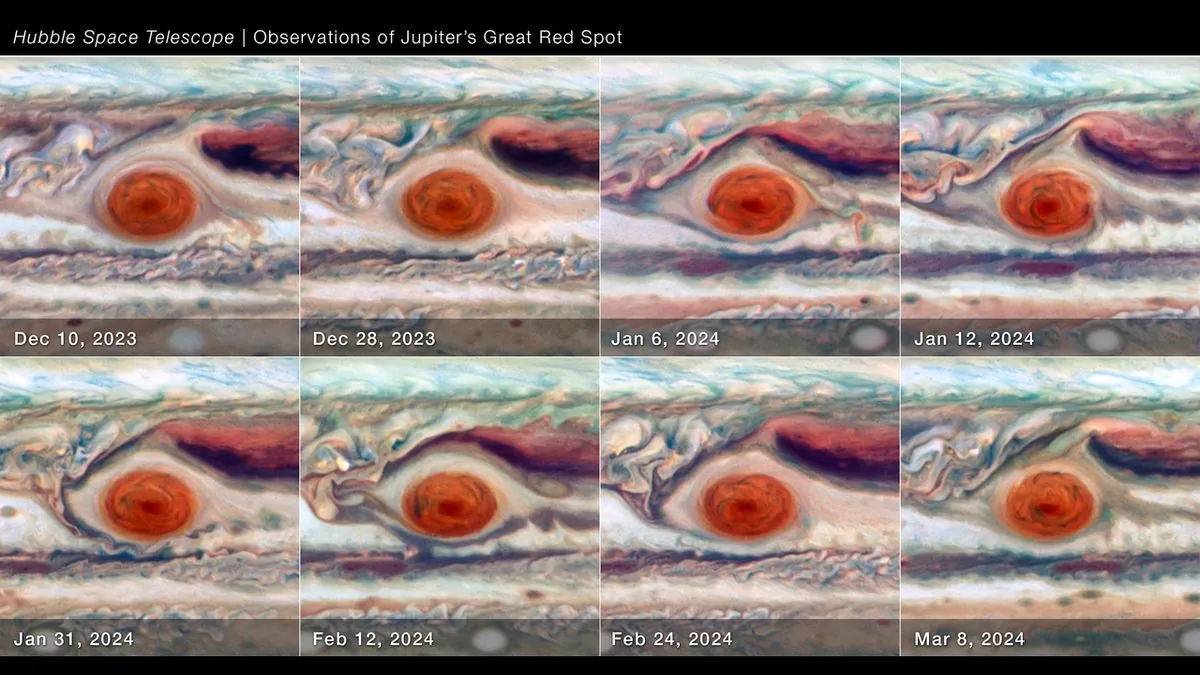Jupiter's Great Red Spot is being squeezed, Hubble Telescope finds: nobody knows why
Kyiv • UNN
The Hubble Space Telescope has recorded that Jupiter's Great Red Spot contracts and unclenches every 90 days. The reasons for this behavior of the giant anticyclone remain a mystery to scientists.

The Hubble Space Telescope has recorded the oscillations of Jupiter's Great Red Spot (GRS), as if it were contracting and expanding every 90 days, UNN writes with reference to Space.com.
Details
Why this enormous anticyclone, which has been shrinking for decades and now measures about 14,750 kilometers across (although astrophotographer Damian Peach reportedly measured its width at only 12,500 km), is behaving in this way remains a mystery, the publication points out.
"Thanks to Hubble's high resolution , we can tell that the GRS is definitely compressing and contracting at the same time as it's moving faster and slower," said Amy Simon of NASA's Goddard Space Flight Center in Maryland. - "This was very unexpected, and there is no hydrodynamic explanation at this time.
Astronomers led by Simon used Hubble to observe the Great Red Spot for 88.5 days from December 2023 to March 2024. The frame-by-frame images taken during this period show that the GRS periodically expands and contracts along its major axis (the widest part of the ellipse).
"While we know that its movement varies slightly in longitude, we didn't expect the size to fluctuate as well," Simon said.

Simon also wants to take another look at the GRS using the James Webb Space Telescope, which this year photographed the Jovian storm in near-infrared light and detected atmospheric waves above the VLP. By being able to study the GRS more deeply at longer wavelengths in the mid-infrared, Simon hopes to see if wind speeds within the storm also vary over time with the waves.
The discovery was reported on October 9 in an article published in The Planetary Science Journal.